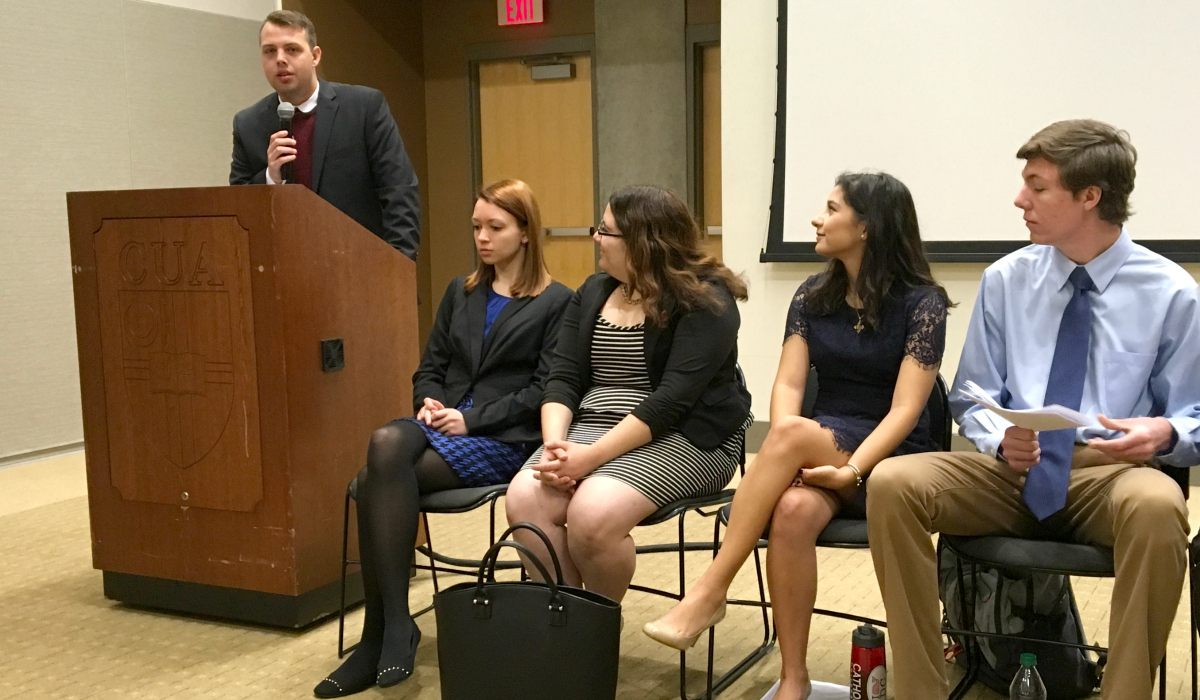

How does religious liberty differ in America and France? And what can be learned from the ideals of each country’s revolutions? Those were the questions explored during a student-led mock policy briefing held at The Catholic University of America last week.
The briefing, which was cosponsored by the University’s Department of History and the National History Center of the American Historical Association on Dec. 1, brought together students from two history classes studying the American and French revolutions.
Though religious liberty is a hot-button issue in both France and America, it is perceived very differently in each country. In America, religious liberty is seen as a positive liberty, meaning citizens want the “freedom to” practice their religion how they see fit. In France, the ideal is generally that of negative liberty — the “freedom from” other people’s religion being pushed upon citizens.
At the briefing, nine students delivered presentations discussing these differences during the revolution-era and today, as well as the rights of religious minorities, and the relationships between state and society. In addition, students in both classes were required to write short research bulletins exploring related topics.
Throughout their presentations, students touched on current issues of religious liberty around the world, including controversies surrounding the Affordable Care Act and recent proposed bans on burkinis in France.
Caroline Sherman, assistant professor of history, planned the event with Amanda Moniz, associate director of the National History Center, to help students gain experience with academic presentations. The event was based on the National History Center’s Mock Policy Briefing Program, which stresses the importance of examining modern policy issues from a historical perspective.
“It’s so easy to become locked into one perspective. Especially living in America, we already have these ideas of what the American Revolution was about,” Sherman said. “By looking at these two revolutions in contrast with each other, we see how the countries have such similar interests, but can go in very different directions.”